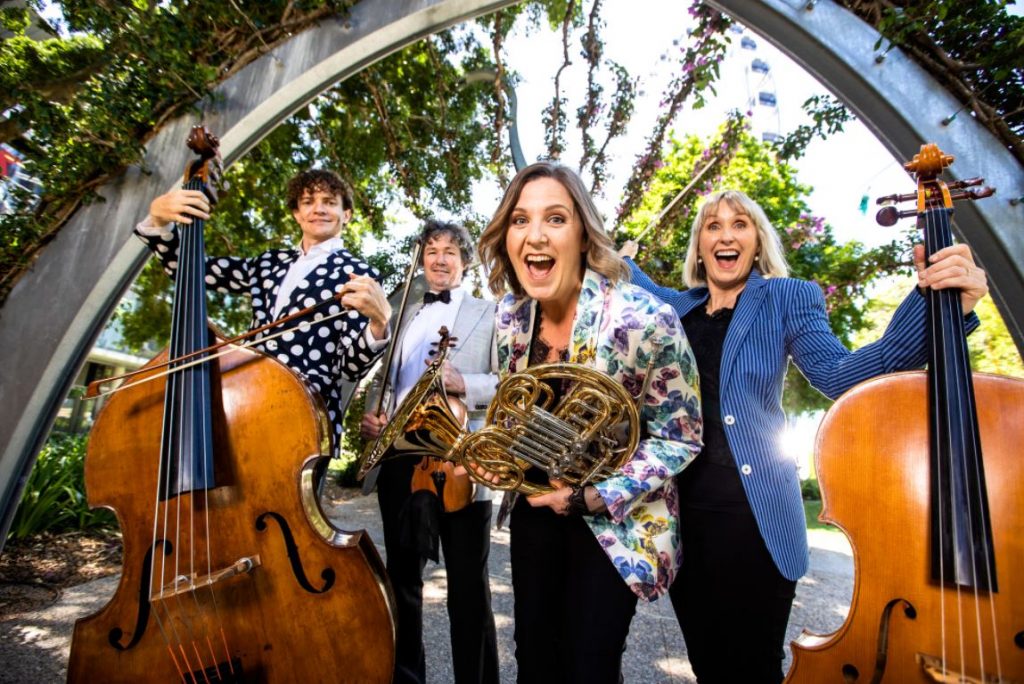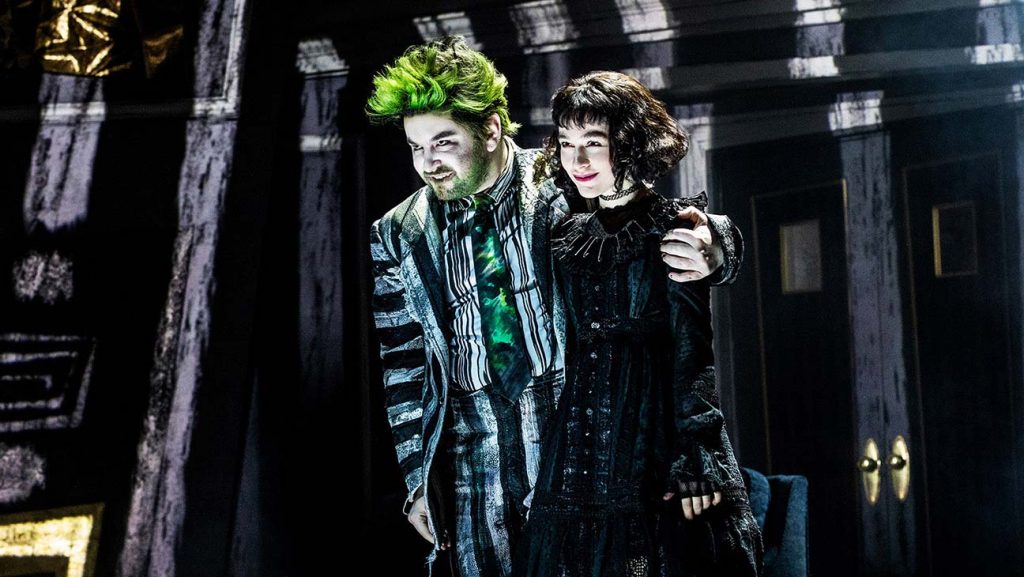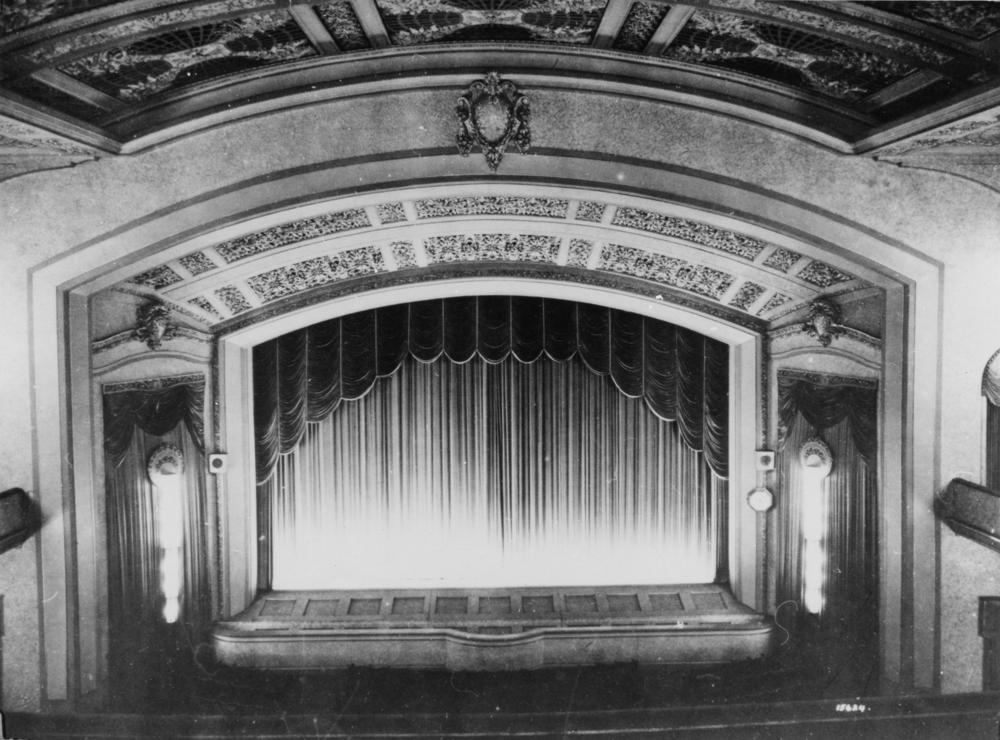
The Lost Theatres of Brisbane
Time is a cruel mistress, not just for the human body, but for the architectural landscape of cities. Brisbane is no stranger to the rapid urbanisation and technological developments of the last century. With limited inner-city real estate and changing tides in the entertainment industry, many theatres have been lost to history.
Some of the most majestic, thoughtfully designed, and exceptionally well-received performance venues have been demolished over the past fifty years, left as mere memories in the minds of patrons and creatives who once graced their stages and audiences.
Wintergarden Theatre
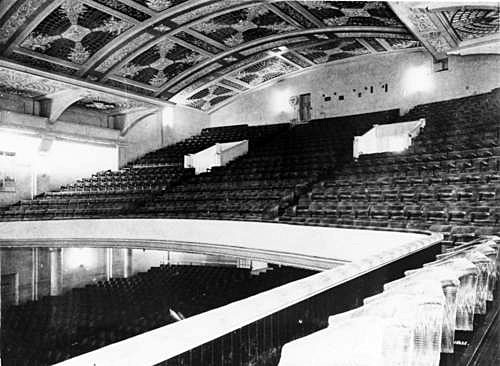
Designed by architects Ballantyne and Hare in association with Hall and Prentice, the Wintergarden Theatre officially opened in the winter of 1924. It housed the then biggest organ in Australia, and hosted a diversity of entertainment including films, concerts, and vaudeville artists.
Theatre makers once described the Wintergarden Theatre as “one of the most modern theatres of its time” but after a short lifespan of just 51 years, the venue was demolished to make way for a shopping precinct. Factors that played a role were the opening of the Regent Theatre nearby, and the approval of plans for the Queensland Performing Arts Centre.
Her Majesty’s Theatre
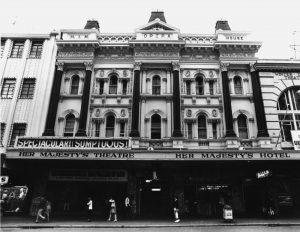
So-called “one of the handsomest [theatres] in Australia”, Her Majesty’s Theatre was of the Italian Renaissance and Corinthian style, designed by architect Andrea Stombuco, known also for his design of parts of All Hallows and St Joseph’s College in Brisbane, and several churches in the region. The venue was officially opened as Her Imperial Majesty’s Opera House in 1888 and, just short of its hundredth year, in the winter of 1983, was demolished to make way for the Hilton Hotel.
Her Majesty’s Theatre played host to various productions presented by The Josephine Stanton Comic Opera Company, Hawtrey Comedy Company, and the Brisbane Amateur Operatic Society; with stars gracing the stage including Dame Clara Butt, Anna Pavlova, and Nellie Melba.
Regent Theatre
Inspired by the Regent in South Yarra (Melbourne), Brisbane’s Regent Theatre housed a remarkable Gothic foyer and French-style auditorium. The venue was designed by a collection of architects, including Richard Gailey Jr, Charles N Hollinshed, and Aaron Bolot. While the Regent Theatre was most commonly known as picture theatre, its orchestra pit and large stage made it “a popular place for all sorts of entertainment.”
The original auditorium was lost to redevelopment in 1980, providing space for four cinemas. Parts of the old theatre were used, but the only surviving feature was the foyer area. Further developments and repurposing occurred over the past forty years that have left the space unrecognizable from its glory days.
Albert Hall
While not quite as elaborate as its London namesake (Royal Albert Hall), Brisbane’s Albert Hall was home to a variety of theatrical entertainment and church events throughout the early 1900s. Situated to the left of the (now) Albert Street Uniting Church, designed by George Henry Male Addison, the venue was officially opened in 1901.
Over a half-century, the space would host musicals, magic shows, cooking demonstrations and science experiments. It housed a grand piano, and once hosted Lord Mountbatten during his visit in 1946. Eventually, the real estate was needed by the State Government, and today the Suncorp Building stands on Albert Hall’s original location.
The Tivoli Theatre
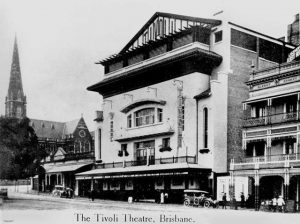
Not to be confused with the modern Tivoli, located at the old Adam’s Bakery, the original Tivoli was opened in 1915, and designed by architect Henry E. White. Labelled, “the latest thing in theatres”, the Tivoli housed two spaces, an enclosed theatre with an 1800 person capacity, and a rooftop or “garden theatre” which comfortably sat 1200.
While the 20s gave the venue a refurbish, and more of a focus on motion pictures, the 60s were not so kind. Brisbane City Council purchased the property, and it officially closed in 1965. The site of the original Tivoli is the present-day King George Square, with the theatre facing the City Hall.
Conclusion
These are just a handful of many theatres that have come and gone throughout Brisbane’s short history. Some quick digging through Queensland history sites, or local University history pages will give you more insight into more of the city’s lost gems.
What are your thoughts on the lost theatres of Brisbane’s past? Leave your opinions in the comments below.
Images sourced from the State Library of Queensland and the Public Domain.




